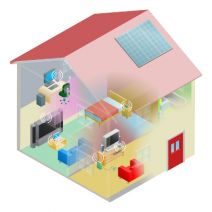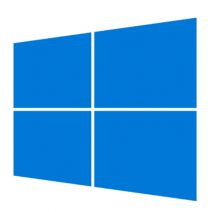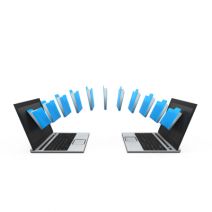 Remote workers are changing the way that both employees and their employers are viewing their workspace. It’s been proven that businesses can mitigate their overhead costs and increase their employee retention rate by allowing their team to work from home, but without the proper technology, they have no chance of being as productive as they can be if they were in the office.
Remote workers are changing the way that both employees and their employers are viewing their workspace. It’s been proven that businesses can mitigate their overhead costs and increase their employee retention rate by allowing their team to work from home, but without the proper technology, they have no chance of being as productive as they can be if they were in the office.
Macro Systems Blog
 For all of you who have Windows 10, you probably have realized that it is, without a doubt, one of the most refined versions of the Windows operating system released by Microsoft in recent years. In a way, it takes the best aspects of Windows 7, combines them with the metro menu from Windows 8, and adds several great new features that improve the user experience. However, not all is well for Windows 10; many users are concerned with some of Windows 10’s questionable data collection policies.
For all of you who have Windows 10, you probably have realized that it is, without a doubt, one of the most refined versions of the Windows operating system released by Microsoft in recent years. In a way, it takes the best aspects of Windows 7, combines them with the metro menu from Windows 8, and adds several great new features that improve the user experience. However, not all is well for Windows 10; many users are concerned with some of Windows 10’s questionable data collection policies.
 With so many businesses switching to the cloud for their data storage needs, it’s assumed that their data will be safe and sound. However, this is only somewhat true. While it’s true that the cloud is a secure and effective way to store your data, the virtual cloud is still vulnerable to freak accidents. Take, for example, the time when Google was struck by lightning last month… four times.
With so many businesses switching to the cloud for their data storage needs, it’s assumed that their data will be safe and sound. However, this is only somewhat true. While it’s true that the cloud is a secure and effective way to store your data, the virtual cloud is still vulnerable to freak accidents. Take, for example, the time when Google was struck by lightning last month… four times.
 It’s been two years since the world was introduced to CryptoLocker, a particularly-nasty ransomware that encrypts a computer’s data while giving the user a deadline to pay a ransom for the encryption key, or else have their data destroyed. What we’re seeing now is that the reach of CryptoLocker is extending beyond the average PC user; even gamers are getting owned by Cryptolocker.
It’s been two years since the world was introduced to CryptoLocker, a particularly-nasty ransomware that encrypts a computer’s data while giving the user a deadline to pay a ransom for the encryption key, or else have their data destroyed. What we’re seeing now is that the reach of CryptoLocker is extending beyond the average PC user; even gamers are getting owned by Cryptolocker.
 Thieves stealing mobile devices like laptops and smartphones have reached epidemic proportions. In fact, 2013 statistics from Consumer Reports and LoJack show that two million laptops were stolen that year, along with three million handsets. Translation; it’s way more likely for your mobile device to be stolen than you probably realize.
Thieves stealing mobile devices like laptops and smartphones have reached epidemic proportions. In fact, 2013 statistics from Consumer Reports and LoJack show that two million laptops were stolen that year, along with three million handsets. Translation; it’s way more likely for your mobile device to be stolen than you probably realize.
 You know the saying “you can never be too careful”? It’s always said by the person who understands the value of proceeding with caution, and understands that all it takes is a moment to lose everything. In some cases, it could be your workplace dignity, but in others, you need to cover your tracks to prevent hackers and other miscreants from performing the unspeakable: messing with your computer while you’re away from it momentarily.
You know the saying “you can never be too careful”? It’s always said by the person who understands the value of proceeding with caution, and understands that all it takes is a moment to lose everything. In some cases, it could be your workplace dignity, but in others, you need to cover your tracks to prevent hackers and other miscreants from performing the unspeakable: messing with your computer while you’re away from it momentarily.
 Every business executive knows the struggle of employee turnover. Your employees might come and go, but your data is one thing that you can’t afford to lose from your business. You might feel that you can trust all of the employees who have put in years of effort to ensure your organization stays afloat, but you may be surprised to learn that a significant number of them will probably leave your company with at least some corporate data.
Every business executive knows the struggle of employee turnover. Your employees might come and go, but your data is one thing that you can’t afford to lose from your business. You might feel that you can trust all of the employees who have put in years of effort to ensure your organization stays afloat, but you may be surprised to learn that a significant number of them will probably leave your company with at least some corporate data.
 Agent Chrome is a pretty well-known guy in Google City. In fact, you could say he was the top of his class at Browser University, and everybody who is anybody knows who he is. When on the job, Agent Chrome sometimes needs to lay low and avoid the prying eyes of the masses around him. And this particular operation, rightfully dubbed “Incognito,” is one such occasion.
Agent Chrome is a pretty well-known guy in Google City. In fact, you could say he was the top of his class at Browser University, and everybody who is anybody knows who he is. When on the job, Agent Chrome sometimes needs to lay low and avoid the prying eyes of the masses around him. And this particular operation, rightfully dubbed “Incognito,” is one such occasion.
 Are you experiencing performance issues with your computer network? Does it seem like it’s not running as effectively as it used to? Given the nature of technology, eventually, you’ll have to replace all of your computer hardware. But before you do, give your network a boost by trying these four IT maintenance best practices.
Are you experiencing performance issues with your computer network? Does it seem like it’s not running as effectively as it used to? Given the nature of technology, eventually, you’ll have to replace all of your computer hardware. But before you do, give your network a boost by trying these four IT maintenance best practices.
 When it seems like every idea has already been patented or brought to fruition, that’s a key indicator that innovation in your company is lacking. Traditionally, advancements in business technology have driven innovation for companies. If your company’s innovation well is running dry, then there are measures that your business can take to become more innovative.
When it seems like every idea has already been patented or brought to fruition, that’s a key indicator that innovation in your company is lacking. Traditionally, advancements in business technology have driven innovation for companies. If your company’s innovation well is running dry, then there are measures that your business can take to become more innovative.
 Your organization is constantly at risk of being attacked by malicious entities. This is a fact that modern businesses have to live with. If this is the first time you’re seriously contemplating cyber security, you need to take all potential options into account; including the worst-case scenario, and how you would combat it.
Your organization is constantly at risk of being attacked by malicious entities. This is a fact that modern businesses have to live with. If this is the first time you’re seriously contemplating cyber security, you need to take all potential options into account; including the worst-case scenario, and how you would combat it.
 One of the greatest advances in technology solutions to have emerged in the past few years is cloud computing. In fact, it’s one of the most popular Software as a Service (SaaS) platforms out there for the modern business. Are you prepared to commit to a cloud solution that can potentially improve productivity on all levels of your business infrastructure?
One of the greatest advances in technology solutions to have emerged in the past few years is cloud computing. In fact, it’s one of the most popular Software as a Service (SaaS) platforms out there for the modern business. Are you prepared to commit to a cloud solution that can potentially improve productivity on all levels of your business infrastructure?
 There’s no denying that smartphones are the predominant consumer technology in the world at the moment. Over a billion smartphones were sold each of the past two years, with growth coming in at a fairly impressive 23 percent from 2013 to 2014. Growth is projected to decrease slightly in future years (around 12 percent in 2015), but it’s obvious by now, smartphone usage will be the principal manner people will access the Internet going forward.
There’s no denying that smartphones are the predominant consumer technology in the world at the moment. Over a billion smartphones were sold each of the past two years, with growth coming in at a fairly impressive 23 percent from 2013 to 2014. Growth is projected to decrease slightly in future years (around 12 percent in 2015), but it’s obvious by now, smartphone usage will be the principal manner people will access the Internet going forward.
 With plenty of new features to throw around, Windows 10 is shaping up to be quite the operating system. One feature that seems to have fallen off of everybody’s radar (so far) is Windows Hello, a brand new way to authenticate your PC login. By taking advantage of biometric scanning, your computer will let you log in just by looking at your face.
With plenty of new features to throw around, Windows 10 is shaping up to be quite the operating system. One feature that seems to have fallen off of everybody’s radar (so far) is Windows Hello, a brand new way to authenticate your PC login. By taking advantage of biometric scanning, your computer will let you log in just by looking at your face.
 For many Windows users, the fact that Microsoft is issuing Windows 10 incrementally came as a shock for those who patiently waited for its release date. While users wait, however, hackers are taking advantage of those who are less patient by creating a ransomware that disguises itself as a launcher for a Windows 10 download. So, while you sit and wait for your version of the latest OS, don’t fall prey to deals that seem too good to be true.
For many Windows users, the fact that Microsoft is issuing Windows 10 incrementally came as a shock for those who patiently waited for its release date. While users wait, however, hackers are taking advantage of those who are less patient by creating a ransomware that disguises itself as a launcher for a Windows 10 download. So, while you sit and wait for your version of the latest OS, don’t fall prey to deals that seem too good to be true.








